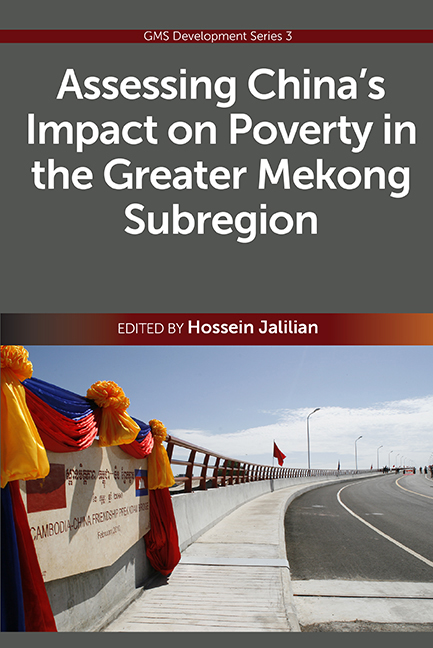Book contents
- Frontmatter
- Contents
- List of Figures, Tables and Boxes
- Foreword
- List of Contributors
- PART I The Context
- PART II CHINA AND THE GMS-4
- PART III THE GMS-4 AND CHINA
- 5 Impacts of China on Poverty Reduction in Vietnam
- 6 Impacts of China on Poverty Reduction in Thailand
- 7 Impacts of China on Poverty Reduction in Cambodia
- 8 Impacts of China on Poverty Reduction in Laos
- Index
5 - Impacts of China on Poverty Reduction in Vietnam
from PART III - THE GMS-4 AND CHINA
Published online by Cambridge University Press: 21 October 2015
- Frontmatter
- Contents
- List of Figures, Tables and Boxes
- Foreword
- List of Contributors
- PART I The Context
- PART II CHINA AND THE GMS-4
- PART III THE GMS-4 AND CHINA
- 5 Impacts of China on Poverty Reduction in Vietnam
- 6 Impacts of China on Poverty Reduction in Thailand
- 7 Impacts of China on Poverty Reduction in Cambodia
- 8 Impacts of China on Poverty Reduction in Laos
- Index
Summary
Introduction
The Context
Emerging as a major driver of regional growth, China is currently presenting Vietnam with enormous business opportunities and challenges. On the one hand, rapid expansion of China's industries, exports and consumer goods markets has led to a surge in demand for raw materials, energy, intermediate products, manufactured goods and services. On the other, China and Vietnam are said to be competing in their domestic and the third country markets, particularly with regard to labour-intensive products.
Vietnam, over the last few decades, has made remarkable improvements in enhancing per capita income and in reducing poverty. Poverty and hunger incidence in the country has been significantly reduced (Table 5.1). In comparison with the standard poverty measurement of US$1 per capita per day, Vietnam has well exceeded the millennium development goal (MDG) of halving the proportion of people whose income is less than US$1 a day by 2015. This proportion was cut eightfold from 39.9 per cent in 1993 to 4.9 per cent in 2006. Poverty incidence as measured by the standard food poverty of Vietnam also declined sharply from 24.9 per cent in 1993 to 10.9 per cent in 2002, 7.4 per cent in 2004 and 6.7 per cent in 2006.
With a view to achieving the standards set by other developing countries in the region, the prime minister issued Decision No. 170/QĐ-TTg dated 8 April 2005, promulgating updated national standards for a new period of development. Measured by the new poverty line, approximately 3.9 million households were still living in poverty in 2005, accounting for 20.2 per cent of total households. The rate then reduced to 15.5 per cent in 2006 and to 14.8 per cent in 2007. At the same time, GDP per capita, measured based on purchasing power parity (PPP), increased from US$402 in 2001 to US$492 in 2003, US$553 in 2004, US$639 in 2005, US$723 in 2006 and to US$834 in 2007.
- Type
- Chapter
- Information
- Publisher: ISEAS–Yusof Ishak InstitutePrint publication year: 2013

